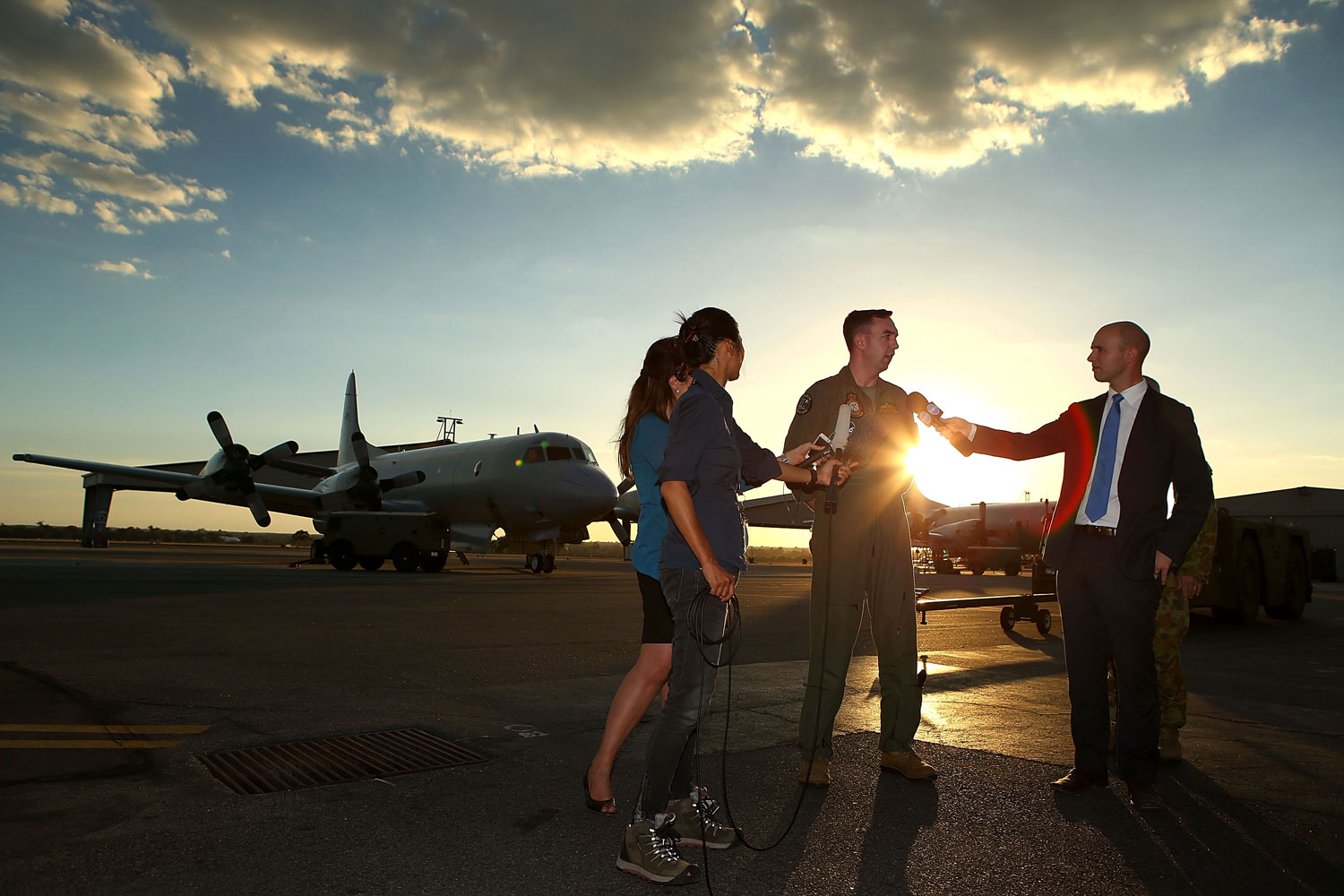
Two more underwater signals that may have emanated from the black boxes of Malaysia Airlines Flight 370 were heard Tuesday, prompting the Australian official in charge of the search to say the missing Boeing 777 may be discovered within “a matter of days”
“I’m now optimistic that we will find the aircraft, or what is left of the aircraft, in the not-too-distant future,” Angus Houston, the head of a joint agency coordinating the search, said at a news conference in Perth. “Hopefully in a matter of days, we will be able to find something on the bottom that might confirm that this is the last resting place of MH370.”
The Australian vessel Ocean Shield originally picked up two signals over the weekend, and the new transmissions were now considerably weaker, said Houston, indicating that the beacons’ batteries may now be close to exhausted. Analysis showed “the transmission was not of natural origin and was likely sourced from specific electronic equipment.”
MH370 vanished soon after departing Kuala Lumpur for Bejing early March 8, and investigators now believe the 11-year-old aircraft crashed in the southern Indian Ocean some 1,000 miles (1,600 km) northwest of Perth. All 239 passengers and crew are presumed dead.
Despite the growing body of evidence, Houston insists that no crash site can be confirmed before wreckage has been positively identified. The beacons’ batteries have already surpassed their 30-day expected life, heaping pressure on search efforts.
Investigators currently have the pings pinned down to a 12-mile (20 km) radius, but hope to narrow this further through trawling, as it generally takes six times as long to search with the Bluefin autonomous underwater vehicle than it does with towed pinger locators. If the noises can be narrowed down, an unmanned submarine may soon be deployed to locate wreckage from the missing Boeing 777.
Some 11 military aircraft, four civil aircraft and 14 ships assisted in Wednesday’s search for debris across 29,000 sq miles (75,000 square km) of ocean — an expanse slightly smaller than South Carolina — located about 1,350 miles (2,200 km) northwest of Perth.
More Must-Reads from TIME
- Cybersecurity Experts Are Sounding the Alarm on DOGE
- Meet the 2025 Women of the Year
- The Harsh Truth About Disability Inclusion
- Why Do More Young Adults Have Cancer?
- Colman Domingo Leads With Radical Love
- How to Get Better at Doing Things Alone
- Michelle Zauner Stares Down the Darkness
Write to Charlie Campbell at charlie.campbell@time.com